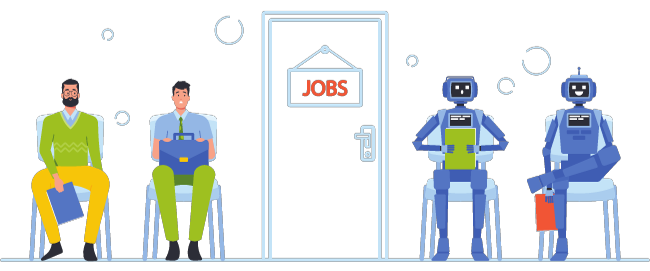AI's Impact on Gen Z: Navigating a Shifting Job Market
AI is reshaping entry-level jobs, impacting Gen Z's career paths and increasing youth unemployment. Education and policy must adapt to this new reality.

Gen Z Faces a New Reality: AI Disrupts Entry-Level Opportunities
A seismic shift is underway in the global job market: artificial intelligence (AI) is not so much stealing jobs as it is hollowing out the traditional entry-level roles that have long served as the proving ground for young professionals, particularly those in Generation Z. While fears of a broad AI jobs apocalypse have dominated headlines for years, the reality is more nuanced—AI is targeting the tasks and positions where workers are just entering the workforce, learning the ropes, and building foundational skills. This trend is reshaping career trajectories, exacerbating youth unemployment, and forcing educational systems and companies to adapt at an unprecedented pace.
The Changing Face of Employment
Who is affected?
The impact of AI on the job market is not evenly distributed. According to a report by the World Economic Forum, as many as 85 million jobs could be displaced globally by 2025, but another 97 million new roles may emerge—roles that often require advanced technical skills, critical thinking, and emotional intelligence. However, the immediate casualties are overwhelmingly entry-level positions in fields such as customer service, software development, operations, and clerical work. In the U.S., entry-level job postings have plummeted by 35% since early 2023, with automation shouldering much of the blame.
How is Gen Z responding?
A recent Deutsche Bank survey found that nearly one in five Gen Z workers is “very concerned” about losing their job to AI within the next two years, a level of anxiety significantly higher than that of older generations. In the U.S., the unemployment rate for workers aged 16–24 stands at 10.5% as of August 2025, reflecting both broader economic trends and the specific challenges posed by automation.
Why is this happening?
Companies are racing to adopt AI-driven solutions that promise efficiency and cost savings. Tech giants like Google and Microsoft have cut hiring by 30% in the first half of 2025 as they invest heavily in automation and machine learning. The result is a shrinking pipeline for young talent: jobs that once served as the first rung on the career ladder—internships, junior developer roles, customer support positions—are being automated out of existence. “We used to say entry-level roles were where you ‘paid your dues.’ Now they are where you get replaced by an algorithm,” observes one industry analyst.
The Skills Gap and Its Consequences
What skills are in demand?
As routine tasks are automated, employers increasingly seek workers with advanced technical skills, creativity, and emotional intelligence. However, a LinkedIn survey reveals that only 32% of Gen Z members feel adequately prepared for the current job market. The mismatch between the skills young workers possess and those employers need is widening, creating a skills gap that threatens to leave an entire generation behind.
What are the long-term implications?
The erosion of entry-level jobs doesn’t just hurt individual job seekers; it disrupts the talent pipeline within organizations. These roles have historically been where future leaders were identified and developed. Without them, companies risk a “hollow middle”—a lack of experienced mid-career professionals ready to step into leadership roles. This structural change could have ripple effects across industries for decades.
Are there regional differences?
The impact of AI-driven job displacement varies by region. In Asia, 21% of current jobs are expected to be displaced by 2026, with manufacturing hit hardest. The European Union anticipates 12 million jobs will be eliminated or transformed by AI in the next three years. In the U.S., AI-induced layoffs rose 22% from late 2023 to early 2025, signaling accelerating disruption. Meanwhile, Africa has seen less immediate impact, though digital labor platforms are predicted to reduce traditional employment in urban areas by 9%.
Voices from the Field
Industry leaders are divided on the severity of the crisis. Some, like Martha Gimbel of Yale, argue that while AI is having a “significant and disproportionate impact” on entry-level jobs, the broader labor market shows “no signs of broad, AI-driven disruption”—at least not yet. Others warn that the loss of these foundational roles could have lasting consequences for social mobility and economic inequality.
Young workers express a mix of anxiety and resilience. “I’m not sure what jobs will even exist by the time I graduate,” says one university student. Surveys confirm this sentiment: 24% of workers aged 18-34 rate their concern about job loss to AI at 8 or higher on a 10-point scale, compared to just 10% of those 55 and older. Americans, in particular, are more worried than their European peers, with the gap widening over time.
The Road Ahead: Adaptation and Opportunity
Educational reform
Educational reform is urgently needed to bridge the skills gap. Universities and vocational schools must prioritize critical thinking, creativity, and digital literacy to prepare students for a job market where routine tasks are increasingly automated. Lifelong learning and upskilling will become essential for career longevity.
Companies
Companies must rethink their talent strategies. Investing in reskilling programs, creating new kinds of entry-level experiences (such as AI-augmented apprenticeships), and fostering a culture of continuous learning can help organizations and employees adapt to the new reality.
Policy makers
Policy makers face the challenge of balancing innovation with social stability. Policies that support education, retraining, and social safety nets will be critical to ensuring that the benefits of AI are broadly shared.
Conclusion
The fear that AI would steal everyone’s jobs has given way to a more targeted reality: AI is replacing the roles where people learn how to work. For Gen Z, this means entering a job market where the traditional career ladder is missing its first few rungs. The challenge—and the opportunity—lies in adapting education, corporate practices, and public policy to ensure that the next generation is not left behind. The future of work is being rewritten, and the stakes have never been higher.



